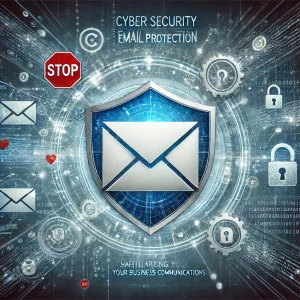In today’s digital world, email spoofing detection has become a critical necessity for businesses of all sizes. Cybercriminals often disguise emails to appear as though they come from a trusted source, tricking recipients into sharing sensitive information or clicking malicious links. Detecting and preventing email spoofing is crucial to protect your business from potential financial loss, data breaches, and reputational damage.
What is Email Spoofing?
Email spoofing is a cyber-attack where attackers forge the “From” address of an email to make it seem like it’s from someone the recipient knows or trusts. This tactic is commonly used in phishing schemes and can lead to the compromise of personal data, credentials, or financial information.
Why is Email Spoofing Detection Important?
Spoofed emails can bypass basic email security systems, landing in your employees’ inboxes and putting your company at risk. Email spoofing detection helps identify these fraudulent messages, ensuring they are blocked before causing harm. Without proper detection mechanisms, your company could face severe security threats, including unauthorized access to sensitive data and exploitation of your brand’s trust.
How Does Email Spoofing Work?
Email spoofing exploits weaknesses in the Simple Mail Transfer Protocol (SMTP), which lacks mechanisms to verify the authenticity of the email sender. Cybercriminals use this vulnerability to send emails from seemingly legitimate addresses. The goal is to trick the recipient into thinking the email is from a known contact or reputable organization.
Key Methods for Email Spoofing Detection
1. Email Authentication Protocols
One of the most effective ways to detect and prevent email spoofing is through email authentication protocols. Here are the top protocols every business should implement:
– SPF (Sender Policy Framework): SPF verifies the domain of the email sender and ensures that the server sending the email has permission to do so.
– DKIM (Domain Keys Identified Mail): DKIM adds a digital signature to emails, enabling recipients to verify that the email has not been tampered with during transmission.
– DMARC (Domain-based Message Authentication, Reporting & Conformance): DMARC combines SPF and DKIM to provide instructions on how to handle suspicious emails. It allows businesses to receive reports on emails that fail authentication.
2. Anti-Phishing Software
Advanced anti-phishing tools scan email content, attachments, and links to detect phishing attempts. These tools use artificial intelligence (AI) and machine learning to recognize patterns typical of spoofed emails, providing real-time protection.
3. DNS-based Email Authentication
Domain Name System (DNS) plays a vital role in authenticating emails. By publishing your email security protocols (SPF, DKIM, DMARC) in your DNS, you enable email recipients to verify that emails from your domain are legitimate.
4. Email Headers Analysis
Carefully analyzing email headers can reveal discrepancies between the sender’s actual email address and the one displayed in the email. Specialized tools and email clients with header analysis features can help identify these inconsistencies.
5. Employee Training
Training your staff to recognize the signs of email spoofing is another line of defense. Encourage employees to double-check suspicious emails, especially those requesting sensitive information or containing unfamiliar links or attachments.
Benefits of Early Email Spoofing Detection
1. Protection Against Financial Loss
Spoofing attacks often target financial transactions or try to obtain confidential information. Detecting and blocking these emails can prevent costly fraud.
2. Preservation of Brand Reputation
If cybercriminals impersonate your business in phishing attacks, it can damage your brand’s reputation. By employing robust email spoofing detection techniques, you can safeguard your company’s credibility and trustworthiness.
3. Enhanced Security Posture
Early detection of spoofed emails can improve your organization’s overall cybersecurity strategy. It strengthens defenses against phishing, malware, and ransomware attacks, keeping your systems and data secure.
Conclusion
As email spoofing continues to rise, protecting your business from these threats should be a top priority. Implementing robust **email spoofing detection** methods like SPF, DKIM, and DMARC, coupled with employee training and advanced anti-phishing tools, will reduce your risk of falling victim to these attacks. Investing in these strategies will not only safeguard your business from cybercriminals but also preserve your company’s reputation and financial stability.
By taking proactive steps today, you can ensure your business remains protected from email spoofing threats and continues to operate securely in the digital landscape.
Need anti email spoofing solution for your business? Contact Terrabyte now




